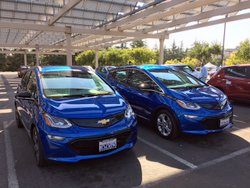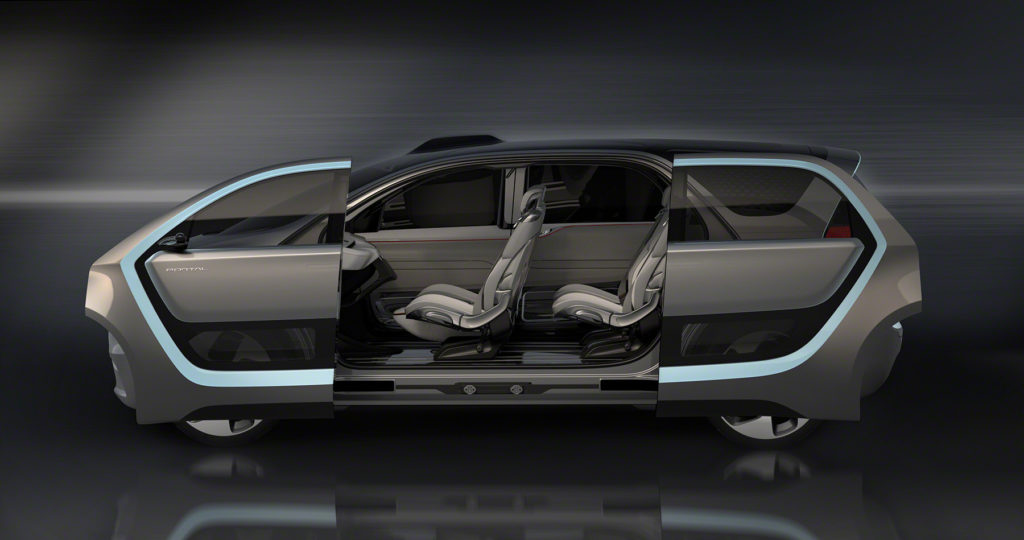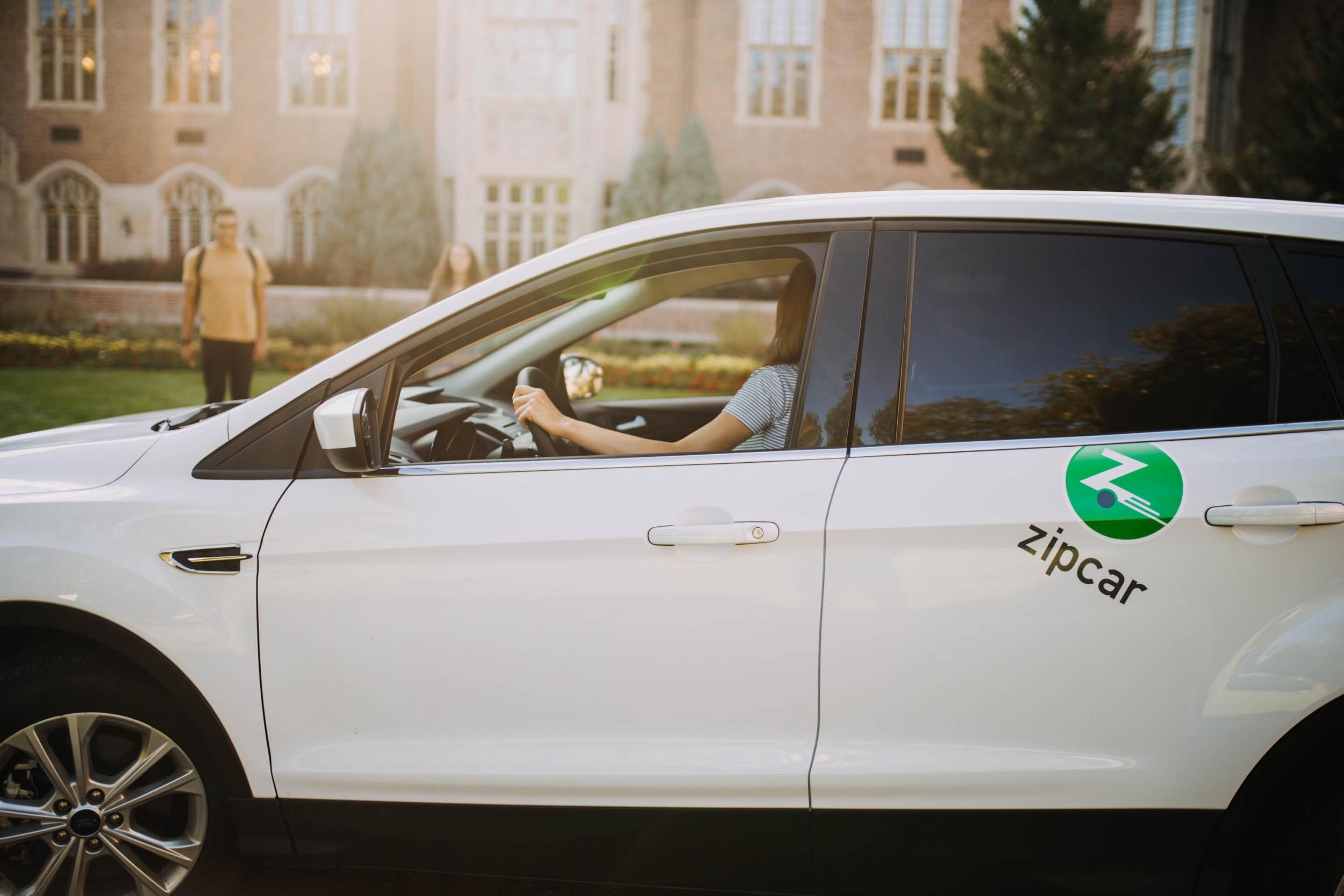Clean Fleet Report Founder Looks Back—And Forward
We have seen amazing progress in cars, electrified transportation and in the future of mobility, since I started Clean Fleet Report in 2006. Oil usage peaked in 2006 in the United States and other developed nations and I reported 10 reasons.

Clean Fleet Report was started to showcase success in clean transportation. Fleets were five years ahead of the mass market. Although I could not find hundreds of electric vehicles in my neighborhood, at US Marine Corps Camp Pendleton I witnessed hundreds of electric vehicles being charged with solar power. They also had a large fleet of advanced diesel vehicles running on biofuel and even a hydrogen fuel cell pilot. In 2006, it took fleets to put in the charging or fueling infrastructure, stock the parts, secure the advanced diagnostics and training, and keep everything running.
Now my neighborhood streets include a steady stream of electric cars from Tesla, Chevrolet, BMW, Nissan, Ford and dozens of others. Since I live near Silicon Valley, where every automaker has an R&D center, I also see a number of autonomous vehicles clocking-up their millions of miles.
I still am in awe of the innovators and the fleet managers who devote years to working through all the issues so that we can all benefit from the technology breakthroughs.
The Circle of Life
I interviewed hundreds of people for my book, Save Gas, Save the Planet. One theme that emerged is many experience a “circle of life.” Their college was in a city with excellent transit and they lived car-free. Later, a job, a relationship or a dog necessitated their buying a car. Relationships blossomed and they had a car and a truck. Many raised children and worked longer hours to support three or four vehicles. Eventually, they retire, downsizing to two, then one, and finally zero cars.

With children long grown, my wife and I replaced our two cars with one Chevrolet Volt. My mom is down to zero. In my book and in Clean Fleet Report, I surveyed the progress of hybrids, electrics, advanced fuels and integrated urban transportation. When the book was released in 2009, much of the technology looked cutting edge.
Naysayers dismissed electric cars as expensive golf carts. Now we have millions of electric cars, SUVs, buses and trucks. We have 150 million electric bicycles. My wife and I only have one electric car, but two electric bikes, and frequently travel on electric buses and rail. Fleets continue to convert innovation into major success.
Another area of breakthrough success is in smart cities around the world. The future of urban mobility is ACES: Autonomous, Connected, Electric, Shared.
Shared
For decades, we have used shared mobility in cities as we ride on buses, rail and on-demand ride-sharing options, including Uber and Lyft. Most major cities have metro rail and bus systems that enable people to travel faster.
Of our shared choices, rail moves the most; cars the least, with buses in between. Rail is laid down into fixed routes that last 40 to 100 years, yet cities grow and reshape organically. When people deboard transit one-quarter mile from their destination, most walk. But for the last one-to-three miles, on-demand services are needed. Smart cities have integrated these services of rail, bus, on demand, bicycling and walking.

Electric
Around 20 years ago, Toyota added an electric motor and advanced battery to a conventional car and introduced the hybrid Prius. Success in hybrid cars led to hybrid heavy-duty vehicles such as buses and trucks. With the success of hybrids, plug-in vehicles were introduced, so that batteries could be charged from garage outlets or public chargers.
By 2025, Navigant expects 37 million electric vehicles (EVs) on the global roads, fueled by lithium battery costs falling from $1,000 per kWh in 2010 to $145 (GM’s price from LG Chem reports Car and Driver).
From electric cars to electric buses and electric rail, we are ending our dependence on gasoline and diesel powering 15 percent efficient drive systems and transitioning to local renewable energy powering 90 percent efficient electric drive systems. Mobility is increasingly powered by wind and solar, not from the extreme emissions from shale drilling and pipelines from tar sands. Millions of lives will be saved annually, now lost to lung damage from air pollution. Trillions will be saved in health care.
In most developed nations of the world, transit systems in major cities are connected with high-speed rail, which is pure electric. The planned 800-mile high-speed rail system for California will connect all major cities, 25 transit systems and run on 100 percent renewable energy. Those transit systems are planning on thousands of electric buses. Ridesharing providers are already adding electric cars to their fleets.
Autonomous
Drivers kill over a million annually, making the roads unsafe for other drivers, cyclists and pedestrians. Self-driving cars see better, using multiple cameras, lasers and 360-degree lidar. Self-driving cars are totally focused on driving; don’t text, bounce to music, drive after drinking, smoke dope or get distracted.

Machine learning and big data will make full use of autonomous fleets during peak hours, routing them to the right places at the right times. In some cities, wireless charging will be used for the fleets of self-driving cars and shuttles. In others, the vehicles will drive themselves during off-peak hours to car washes and parking structures where they will be fast-charged.
The benefits of self-driving are hotly debated. A transportation authority, San Francisco CTA, states that the on-demand services have made the streets of SF more congested. Other studies conclude that on-demand leads to fewer cars and more transit use. After analyzing the data from three million taxi rides, MIT calculated that 2,000 on-demand 10-person vans in New York CIty could replace 14,000 taxis. MIT researchers also estimate that successful use of ride-share apps like Uber and Lyft could reduce the number of vehicles on the road by a whopping 75 percent without slowing down travel.
We will have autonomous cars, buses and trucks. Vancouver even has electric self-driving Skytrain monorail.
Put a price on carbon, congestion zones and vehicle miles traveled during peak hours, and most urban transportation will not be solo drivers. It will be in electric and autonomous shared rides like Lyft Lines, Waymo and Waze (Alphabet companies) shuttle vans, autonomous buses and rail. Autonomous vehicles will save lives, insurance rates will drop, hospital bills will drop, urban housing will be more affordable without requirements of one and two spaces per unit. ACES mobility improves urban density.
When I listen to debates about autonomous vehicles, I am reminded of similar debates 10 years ago about electric vehicles. EVs were predicted to add massive congestion, use nothing but coal power, eliminate jobs and cause recessions by reducing petroleum demand. None of these alarming forecasts happened.
Connected
We were making a long and painful drive back from Los Angeles to San Francisco in heavy traffic. On the freeway, in the middle an empty desert, my Android Auto navigation told me that I could save 37 minutes by taking the next exit. I almost dismissed the direction as an error, but I trusted Google Maps and took the exit. As we drove 12 miles on a windy sideroad, I looked at the I-5 freeway in complete gridlock, due to a major accident. After 12 miles, we were directed back on the freeway, indeed saving 37 minutes.

Google could see the speed of thousands of Google Map users at that GPS location. In my Google Map settings, I had given permission to reroute me based on traffic information. Google’s sophisticated algorithms saved me valuable time. Tomorrow, similar apps will guide us through our day of interconnected services making best use of rail, transit, car, and some healthy walking.
Leading cities are already using ACES – autonomous, connected, electric, and shared mobility. Look for high growth in smart cities. ACES brings us mobility that is safe, pollution-free, healthy and less expensive.
Congratulations to all who have made a difference these past 12 years. Engineers have dramatically improved drive systems. Software wizards have transformed cars into networks of supercomputers on wheels.
Congratulations to Michael Coates, who has been running Clean Fleet Report these last three years and to his team, which keeps you updated about today’s most efficient cars and tomorrow’s most intelligent transportation. Most important are all the readers from fleet managers and car owners who take the best information and ideas and put them into action.

John, a great retrospective, with a healthy dose of future. It is certainly an exciting time to be watching (and participating) even from the wilds of rural Australia. We have decarbonised fairly seriously, just waiting for first ev (next week, with luck).
I’m a fan of congestion charging, carbon tax, and road use tolling – if one plays the cards right, none will affect one, much!
Cheers
Pete
@Pete Gorton,
Glad you liked it. –ed